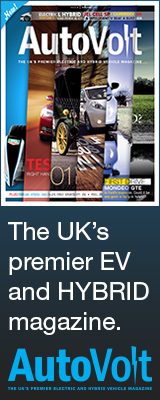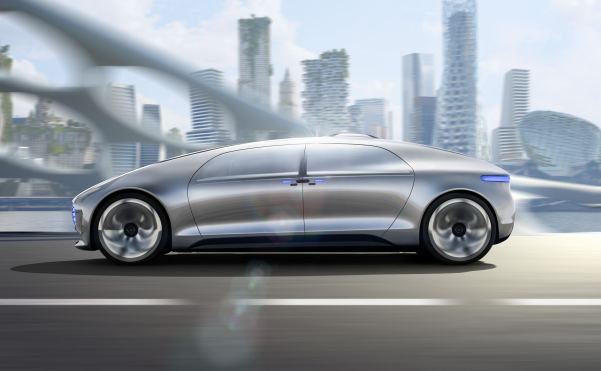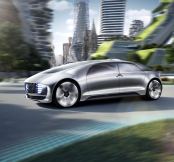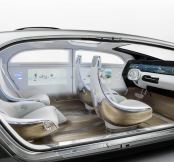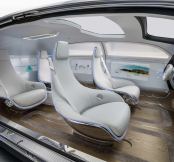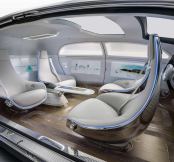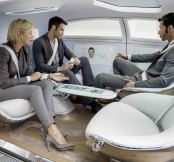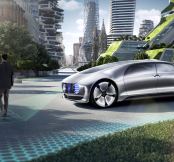Autonomous driving in hydrogen-powered luxury, Mercedes-style
2015-02-13 19:30:47
This is the new Mercedes-Benz F 015 Luxury in Motion concept car. It is a car that will afford a peek into the fully autonomous self-driving future and an interpretation of modern luxury in a connected world.
At a time Daimler predict that 15 new megacities with more than 10 million inhabitants in each will develop globally over the next 15 years, the company says its focus “shows how the automobile is changing from a means of transportation to a private retreating space.” Mercedes is looking into urban infrastructure design with special safety zones where only autonomous vehicles can drive and further urban spaces where autonomous cars park themselves on the outside.
As a result, the cabin of the F 015 is built like a private members lounge with a huge amount of space in which to hang out, thanks to a wheelbase that is 3,610mm – or to put it another way, 445mm longer than that of a regular S-class Mercedes.
As soon as the rear-hinged doors are opened, the seats swing outwards by 30-degrees to welcome their occupants or aid their exit. There are four wide cup-like armchairs which have the ability to both rotate and swivel, allowing occupants to reconfigure the cabin in any way they see fit, whether that be in a conventional forward-facing format or, for a business meeting for example, facing each other.
No less than six digital screens help establish a communications hub that is operated by a combination of gesture controls and eye-tracking software. This makes interaction with the computers easier than ever before and allows occupants to both interact with the car as well as the outside world.
For a contemporary-bordering-on-futuristic look, metal and glass is used, which is mixed with organic materials such as open-pore walnut and leather to provide a luxury feel.
The cabin is cocooned in a tear-shaped one-box design crafted in carbon-fibre-reinforced plastic combined with aluminium and steel to keep weight to an absolute minimum. Indeed, the widespread use of lightweight materials helps ensure the F 015 weighs 40% less than a typical car of this size, thus suggesting that it should be decent to drive. The absence of a B-pillar helps ease access to the interior. But a mechanical interlocking system is automatically initiated when the doors are closed, thus ensuring there is structural rigidity with minimal intrusion in the event of a crash. In a further effort to absorb energy in an impact, part of the door structure inflates like an airbag. This is an evolutionary development of the Pre-Safe system from the 2009 Experimental Safety Vehicle.
LED lights are used at the front and rear. Unusually, as well as lighting the way, they also react to communicate with other cars and road users. It also provides an outside indication of when it is being driven manually and when it is being driven autonomously by the LED lights glowing white in manual mode and blue in autonomous mode.
Mercedes-Benz is remarkably tight-lipped about its autonomous driving capability. This suggests that it uses a mix of existing technology, such as radar, laser, hyper-precise GPS and cameras to navigate its way around. Note that it still has a steering wheel and, if you look carefully, you can see two pedals discretely tucked away at the front of the cabin. When the driver turns their chair to the front, the steering wheel automatically presents itself from the dashboard.
The ultra-safe structure is propelled by a hydrogen-powered fuel cell drive system for zero emissions. This is based on that previewed on the 2011 F 125 research vehicle which stored fuel in a special carbon-fibre reinforced plastic tank.
This article was prepared by First4Auto the automotive editors.
Reported By
Andrew Merritt-Morling
Chief Editor


